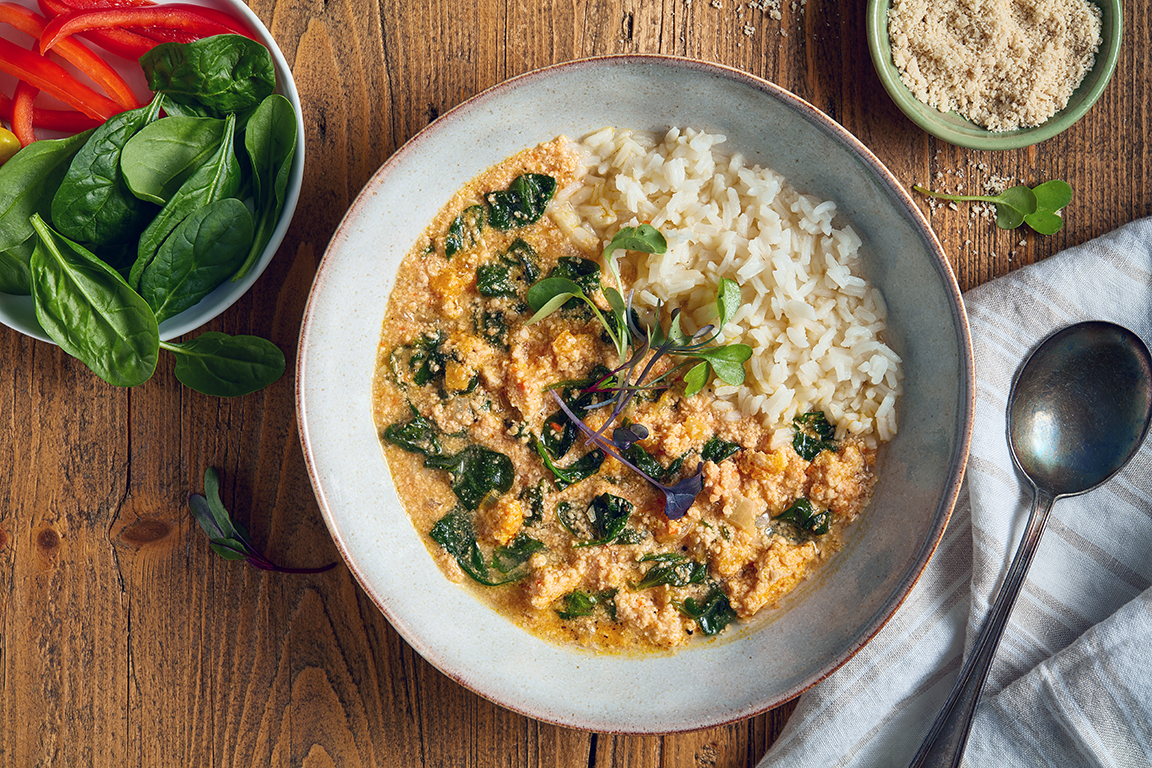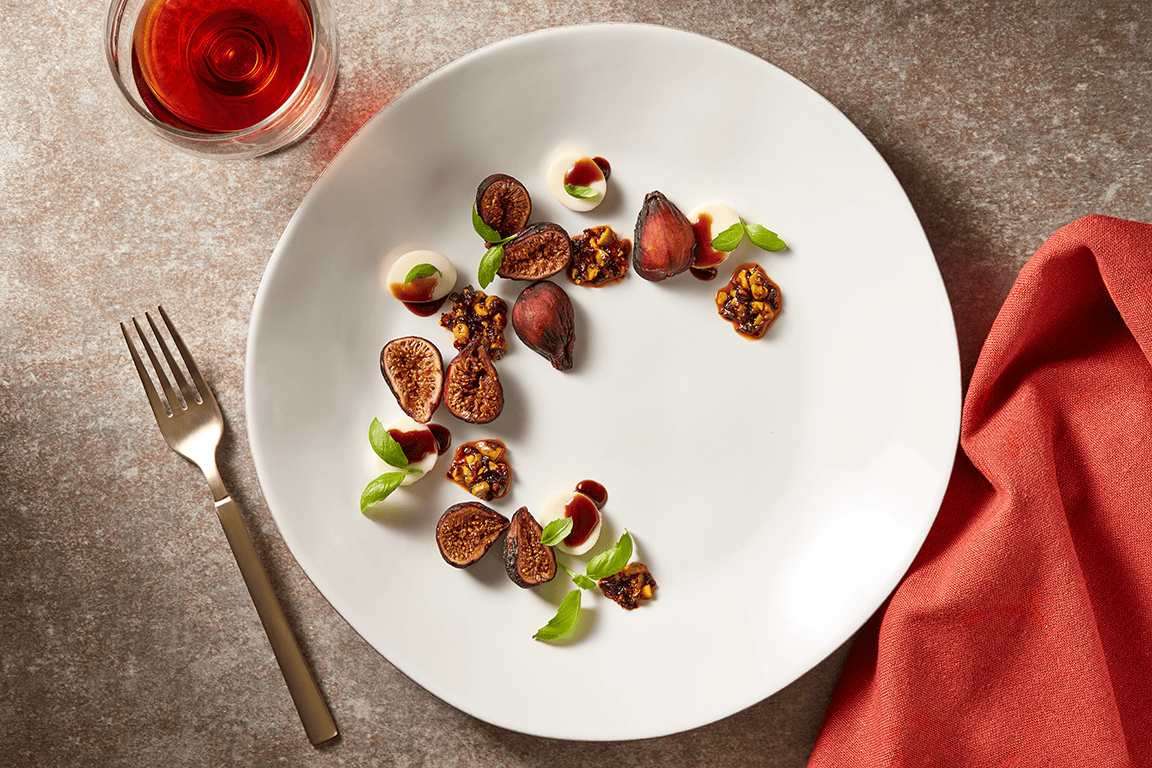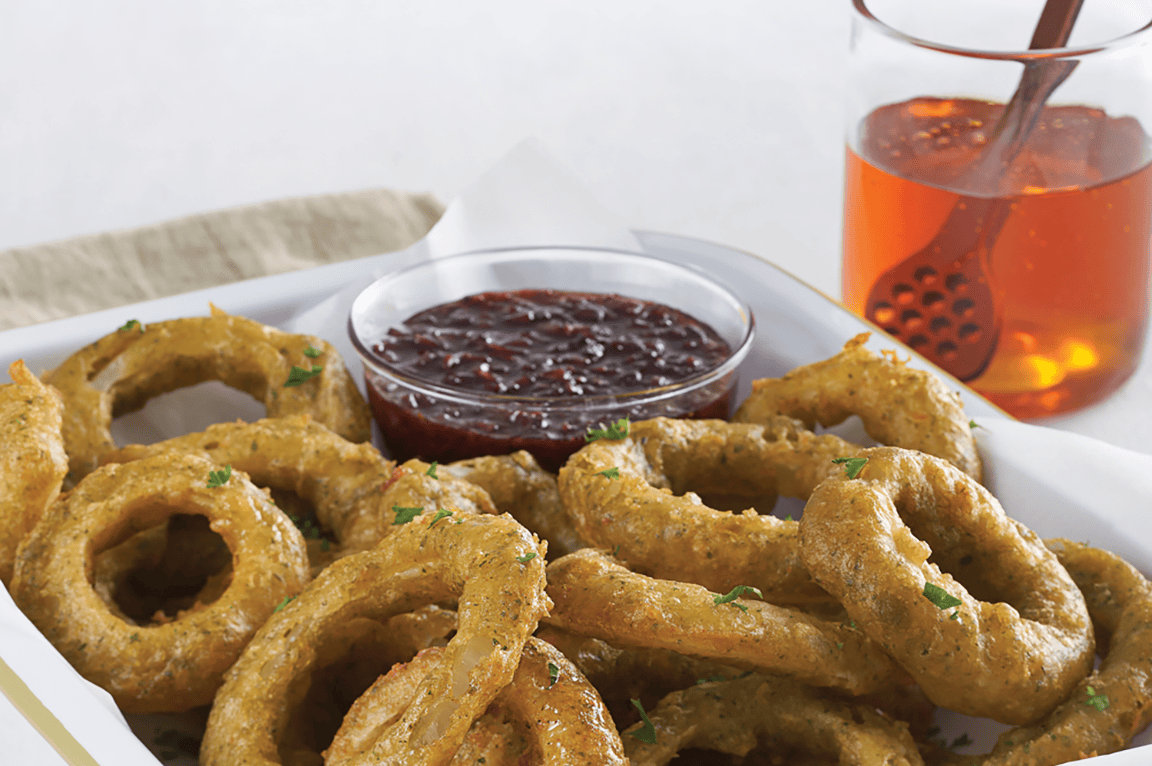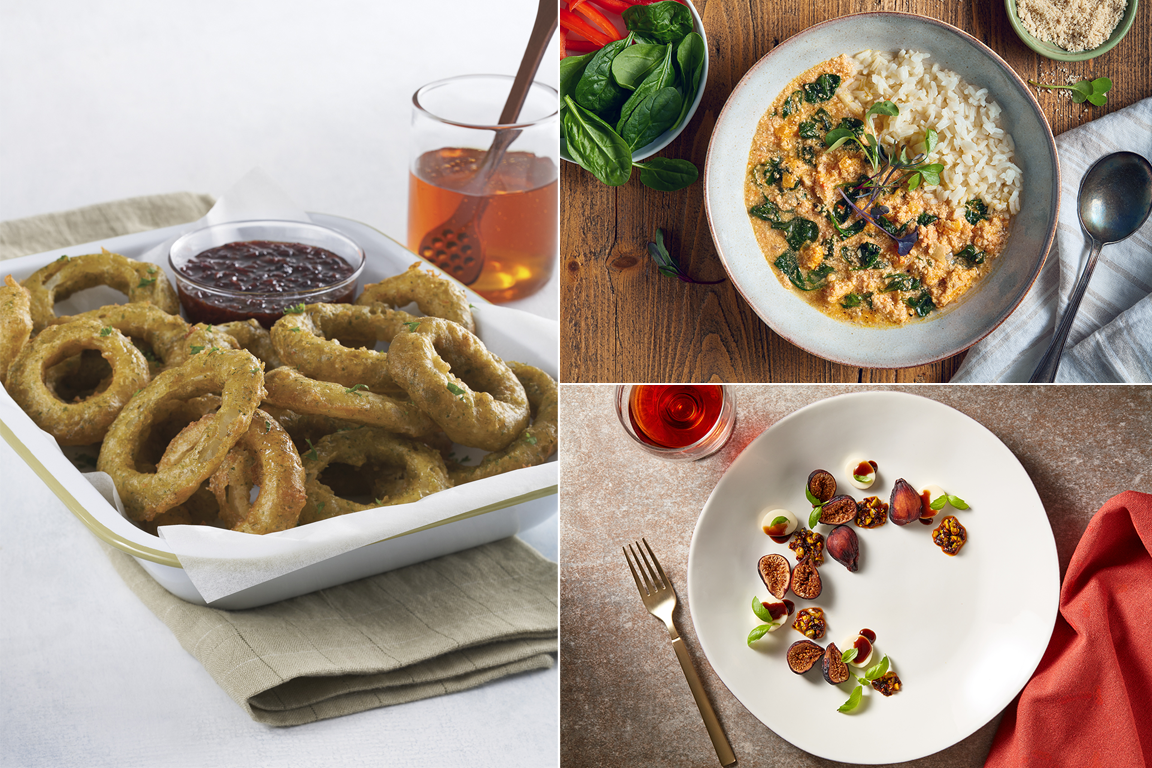

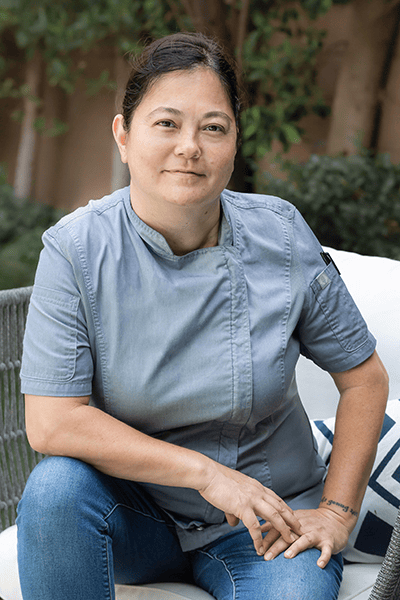
Kajsa Alger
Regional Executive Chef
Porto’s Bakery & Cafe
Kitchen Collaborative is a recipe-development initiative formed by Summit F&B and Flavor & The Menu. To fuel flavor innovation, a group of talented chefs partnered with sponsor brands and commodity boards to create recipes that showcase the passion and potential of our industry.
“My mom is Chinese, my Dad is European American. My grandmother grew up on a farm in Arkansas and I grew up in a Russian neighborhood,” cites Kajsa Alger, Regional Executive Chef, Porto’s Bakery & Café. “So my childhood was spent eating polar-opposite menu items: Cantonese dim sum, chicken and dumplings, and Russian eggplant. Egg custards and pork buns. Ukrainian borscht. Sun tea and strawberry shortcake.” This “eclectic” mix was a far cry from what most American households found popular in the 1970s, she later realized. She still recalls her delight when, as an adult, she tried her first bite of a traditional tuna casserole. “I thought it was the best thing I had ever tasted. It’s ridiculous now, but I still remember everything about that first bite.”
Today, Alger works to help create similarly indelible flavor memories for others, but leaning less on what’s popular and more on the gastronomic influences and experiences she’s collected over her lifetime. Her dishes for Kitchen Collaborative—West African Egusi Soup, Autumn Fig Caprese with Chile Crisp Pistachios and Falafel-Battered Onion Rings with Kalamata Olive Honey—are a perfect manifestation of her eclectic inspirations.
West African Egusi Soup
African cuisines and signature flavor systems are on the precipice of a major breakthrough in this country, already expanding from niche concepts to the menus of modern fine dining sites. “Mexican, Italian and Asian have dominated the marketplace for so long,” says Alger. “I think we’re going to see African countries showcased in cuisine more and more—certainly in the big cities.” And with this West African Egusi Soup, she’s doing her part to help generate broader acceptance.
“I have always been a fan of West African cooking. The flavors are so complex for seemingly simple comfort foods,” says Alger. When asked to showcase bases and stocks from Custom Culinary, she seized the opportunity to create a dish that checked multiple boxes: present a nontraditional dish that demonstrated the time-saving advantages of the products, as well as their versatility. “This dish is traditionally made with pieces of meat to provide flavor, but the Custom Culinary® True Foundations™ Liquid Vegetable Stock Concentrate and Custom Culinary® Gold Label Mirepoix Base gave full flavor, while keeping it vegetarian/vegan—and delicious.”
Egusi melon seed is available online or in African markets, says Alger, noting that the product should already be ground or, if not, pulsed in a food processor to a coarse flour consistency. The soup also features yellow onions, red bell peppers, Scotch bonnet, red palm oil (sustainably sourced, preferred) and rough-chopped spinach. It’s served with white rice or fufu, a West African signature dough made from starchy vegetables. Alger equates the dish to the more-recognizable Indian saag paneer. “As the melon seed cooks, it becomes fluffy and light—almost the look and texture of a scrambled egg, but a little sweeter and more neutral in flavor,” she explains. “The broth is rich and spicy, and the greens are cooked down—think creamed spinach. When eating with fufu, it’s nice to have it a little thicker. But if eating over rice, you may want more of a soupy broth. It’s a matter of personal preference.”
Alger found the tomato-centric vegetable stock added depth and brightness, while the mirepoix base brought vegetable notes that enhanced the overall flavor build. “You can use one or the other,” she says. “But I found the combination of the two is what gave the finished dish so much flavor.”
Autumn Fig Caprese with Lee Kum Kee® Chili Crisp Pistachios
Alger is a big fan of both hoisin sauce and chile crisp oil, cooking with them regularly. But for Kitchen Collaborative, she set aside her conventional recipes to embrace the challenge of showcasing these ingredients in an unexpected, non-Asian menu application. “It was summertime, and my first thought was Caprese, but I knew the hoisin sauce would not pair particularly well with tomatoes,” she says. Looking ahead to autumn, “Figs would be beautiful, and I decided to do a fall-inspired Caprese, using the Chinese ingredients to up the game.”
Alger’s Autumn Fig Caprese with Chile Crisp Pistachios is an elegantly simple build, featuring ripe, halved figs, along with cherry-size ciliegini mozzarella suffused with the distinctive flavors of balsamic vinegar and Lee Kum Kee® Hoisin Sauce, while shelled, roasted, salted pistachios are spiked with Lee Kum Kee® Chiu Chow Style Chili Crisp Oil. “The hoisin is beautiful with the balsamic vinegar, adding a depth and complexity that has become a combo I now use all the time,” says Alger. The secret, she explains, is the balance. “There is a sweetness when you pair the hoisin-balsamic with the figs, and it gives a bit of a tang to the mozzarella. The chile crisp and the pistachios provide a spicy, crunchy counterpart, while also playing off the creaminess of the mozzarella and the fragrant basil. To me, all of the ingredients offset each other.”
Chile crisp is having a moment, as forecast by Flavor & The Menu two years ago, when it pronounced the ingredient as a “flavor on the edge.” Indeed, Alger considers the chile crisp to be the star of the show in this dish. “But it is strong,” she warns. “The spice level varies by how much you mix it and how long you let the pistachios sit.” Ideally, she advises, the dish would be plated individually, to allow for adjustments as needed. Alger also experimented with different types of balsamic vinegars, conceding that while quince balsamic was her favorite, it’s not a common ingredient in most kitchen pantries.
Falafel-Battered Onion Rings with Kalamata Olive Honey
“What savory ingredients could pair well with honey?” Alger asked herself. Initially, she thought of tomato, then smoke, then chile. “But all of those felt very clichéd. I wanted something salty to offset the sweetness.” And then she recalled a dish she’d once created that featured a sauce with Kalamata olives and honey. “I loved that combination.”
Now set on the olives, Alger found herself moving in a Mediterranean/Middle Eastern direction, which led her to falafel. “But not everyone loves the heaviness and intensity of falafel, so I thought a great, accessible showcase of those flavors would be to apply them to a fan favorite like onion rings,” she says. Her Falafel-Battered Onion Rings with Kalamata Olive Honey may be an unconventional take, but Alger is confident the flavor story sells itself. “Who doesn’t like onion rings? I could see this on the menu everywhere from a big fast-casual chain to a small, Mediterranean restaurant.”
To produce the falafel batter, Alger combines chickpeas, paprika, cumin, thyme, parsley, cilantro, jalapeño, baking soda and salt in a food processor, puréeing until it is a smooth paste and then adding flour, baking soda and water to produce a bright green, pancake-like mixture. For the olive-honey dip, Alger selected a buckwheat varietal. “I bought a bunch of different types of honey, tasted them all and liked the buckwheat best for this application.” In addition to the pitted, finely chopped Kalamata olives, she adds smoked paprika and Sriracha to the honey. “The Sriracha mimics the hot sauce that you would get on a falafel wrap,” she explains. “It adds a nice balance to the sweetness of the honey and the saltiness of the olives.”
Project Management: Summit F&B
Photography: Carlos Garcia // Food Styling: Peg Blackley







